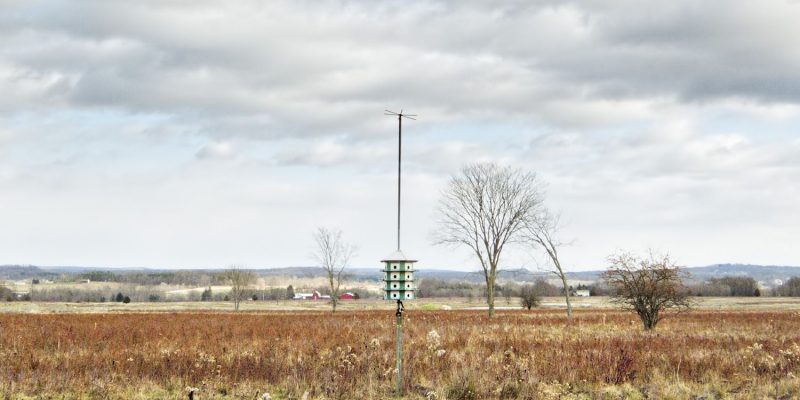
In my conversations around town, I’ve been surprised to find out how few people know about the Shawangunk Grasslands National Wildlife Refuge. Of course the spectacular cliffs of the Shawangunk Ridge grab all of the glory, while this unassuming flat field is a hidden gem in our midst. Maybe I shouldn’t let anyone know; then again, I think you should know.
This is a 566-acre preserve, just beyond Gardiner’s southern border, on Hoagerburgh Road in Shawangunk. When I first moved to Gardiner (in 1994), I heard about the property from the man who mowed my lawn—he talked of UFOs hovering over it, and a secret underground tunnel that went to Stewart for covert military operations. My favorite was a story about a burning shed on the property; when the fire department arrived the shed had a stream of people coming out of it—way more than could possibly have fit in the building. Maybe that’s true, but the official history is that in the 1940s, the military acquired the land as a satellite training field for Stewart Airport. They brought in tons of dirt, filled the wetlands and transformed it into the Galeville Airport. The land was decommissioned in 1994 and then transferred to the U.S. Fish and Wildlife Service in 1999; Fish and Wildlife is charged with protecting and managing the property, with a specific goal of protecting its biological diversity.
With the explosion of development in the Hudson Valley in recent years, the nesting, feeding, and foraging habitats of grassland birds have been vastly diminished, and currently, there are several threatened and endangered species that frequent the property—Bobolink, Savannah sparrow, Grasshopper sparrow, Upland Sandpiper, Northern Harrier and Short-eared Owl. Across the country, grassland birds have declined precipitously over the last 30 years, more than any other group of North American birds. In New York State, this refuge has been identified as one of the top 10 areas for grassland birds.
The interesting tid-bit is that grasslands tend to quickly revert to shrubs, and then trees. In order to maintain the area for wildlife, the fields need to be constantly mowed—either by animals or tractors. To keep it wild, we need to keep it managed. Recently, the management of the property has been mired in controversy. Last year, it was granted $799,000 in stimulus funds to improve the drainage and cover the runways with dirt––thus expanding the available grasslands by 30 acres. At first, the project was fingered by some as a symbol of stimulus waste, and then, some months after the restoration began, the Department of Environmental Conservation issued a stop-work order—citing the contractor with inadequate erosion controls and a process that was potentially damaging the sensitive habitat. Given the rules and regs of the day, moving tons of dirt is not as easy as it used to be.
The Grasslands need a friend. Marie Springer, head of the Friends of Wallkill River National Wildlife Refuges, has been cheerleading from afar, in Sussex NJ, but would like to get a Friends group up and running locally. She told me that “this place will be awesome—for both humans and birds,” once it gets beyond the bureaucracy. If you’re interested in helping to get such a group started please contact me: nadine@gunk.org; 255-4374.
